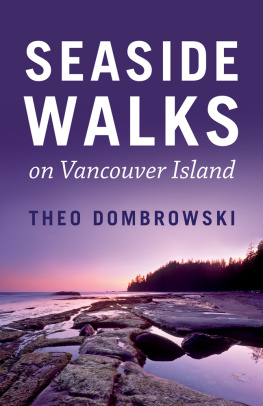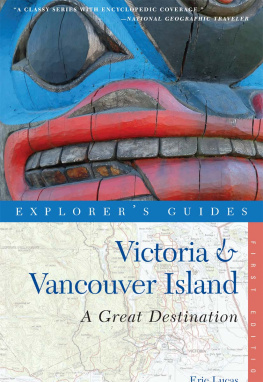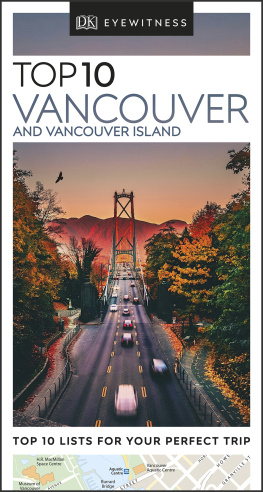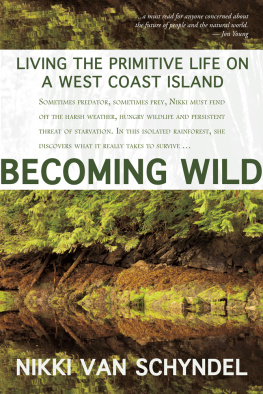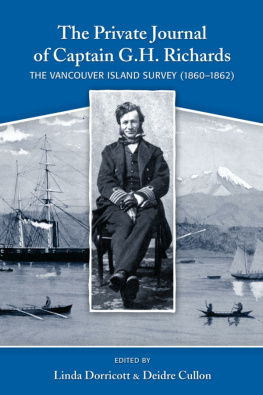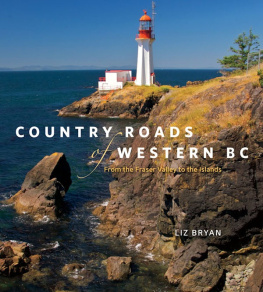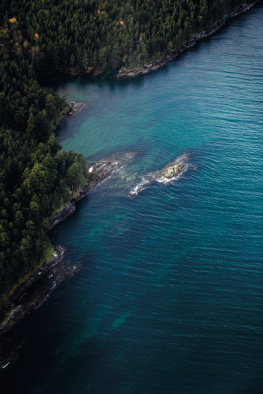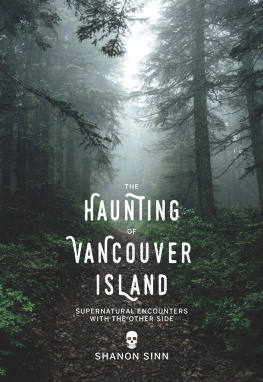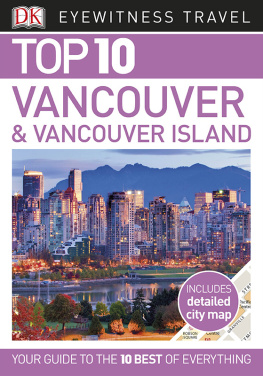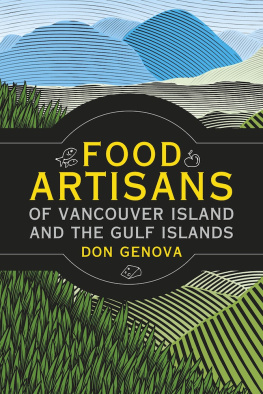Copyright 2019 by Michae l Layland
All rights reserved. No part of this publication may be reproduced, stored in a retrieval system, or transmitted in any form or by any meanselectronic, mechanical, recording, or otherwisewithout the prior written consent of the publisher. For more information, please visi t touchwoodeditions.com
Editing by Jea n Layland
Design by Coli n Parks
Cover image: An Island in Birds Eye Cove , by E. J. Hughes, used with the kind permission of the artist s executors.
LIBRARY AND ARCHIVES CANADA CATALOGUING IN PUBLICATION
Title: In nature's realm : early naturalists explore Vancouver Island / Michae l Layland.
Names: Layland, Michael, 1938 - author.
Description: Includes bibliographical references an d index.
Identifiers: Canadiana 20190121793 | ISBN 978177151306 7 (hardcover)
Subjects: LCSH: Natural historyBritish ColumbiaVancouver Island. | LCSH: NaturalistsBritish ColumbiaVancouver IslandHistory. | LCSH: Vancouver Island (B.C.)Description and travel. | LCSH: Vancouver Island (B.C.)Discovery and exploration. | LCSH: Vancouver Island (B.C.)History. Classification: LCC QH106.2.B7 L39 2019 | DDC 578.09711/2dc23
We acknowledge the financial support of the Government of Canada through the Canada Book Fund and the Canada Council for the Arts, and of the Province of British Columbia through the British Columbia Arts Council and the Book Publishing Ta x Credit.



The information in this book is true and complete to the best of the authors knowledge. All recommendations are made without guarantee on the part of the author. The author disclaims any liability in connection with the use of thi s information.
I may say that ... there is no better field in Canada than [Vancouver] island for collecting interesting things.
Professor John Macouns letter to Dr. C.F. Newcombe,
March 18, 1890

Foreword
ON READING THE PROOFS OF Michael Laylands In Natures Realm: Early Naturalists Explore Vancouver Island , my first thought was, Why hasnt this book been available for 50 years? Scholars of early British Columbia tend to be compartmentalized into some aspect of archaeology, anthropology, ethnobotany, or into the specific histories of the maritime fur trade, the land-based fur trade, the colonial era, or the early provincial era. For 18th- and 19th-century studies alone, scholars are further pigeonholed into specialists in the Spanish, British, or American expeditions, or in the main land-based fur-trading companiesthe North West, Pacific Fur, and Hudsons Bay companies. Such scholars tend to be familiar only with the naturalists who intersect with their particular era o r interest.
What Layland has done here is consider the botanists of Vancouver Island, starting with Indigenous people, the islands first true naturalists, and continue through the voyages and trading expeditions of the first century of contact, to end in the 1880s with the formation of the Natural History Society of British Columbia and the British Columbia Provincial Museum. He examines the broad continuum of naturalists and natural history regardless of the national, regional, or temporal specialties that scholars traditionally work within. He collects and unites many individual strands to tell a larger overarching story of naming and species reconnaissance. In the process, he provides an overdue public service to anyone interested in the natural history, history, and achievements of the early settler culture of Vancouve r Island.
But the audience for In Natures Realm will extend far beyond Vancouver Island. The island was, after all, the linchpin and physical centre of the entire ethnographic Northwest Coast and the historic North West Coast. Therefore the book will be of particular interest to all coastal British Columbians and to our neighbours in Washington, Oregon, an d Alaska.
Indeed, I can think of no more accessible introduction to the early history of coastal British Columbia than In Natures Realm . The many colour illustrationspainstakingly gathered from dozens of archives, museums, and galleriesof botanists, Indigenous hosts and traders, ships, birds, mammals, plants, and sea life make for a work of great range, breadth, and synthesis. But In Natures Realm is more than this. Layland has resurrected the careers and contributions of the scientific intelligentsia that helped define and name the natural variety that, as newcomers, they encountered in this ancien t landscape.
For example, Layland features two eminent naturalists whose names are commemorated in the trees that are most representative of the Coastal Douglas-fir ecosystem or biogeoclimatic zone, which stretches in a narrow low-elevation coastal strip from Victoria to Bowser and includes the many Gulf Islands south of Cortes Island as well as a narrow band along the Sunshine Coast near Halfmoon Bay. The smallest major ecosystem in British Columbia, the Coastal Douglas-fir zone occupies only 0.25 to 0.3 per cent of th e province.
To the west, the Vancouver Island range and the Olympic Mountains in Washington State create a rainshadow that protects the Coastal Douglas-fir region from incoming precipitation and the raw and exposed power and fury of the open Pacific. This major outer mountain barrier creates a large, sheltered, and temperate refuge characterized by warm and relatively dry summers and long, mild, and wet winters. The result, on the leeward side of the mountains and the southeast coast of Vancouver Island, is a Mediterranean-typ e climate.
The characteristic trees of the Coastal Douglas-fir ecoregion are the coastal variety of Douglas-fir ( Pseudotsuga menziesii var. menziesii ), the Garry oak ( Quercus garryana ), and the arbutus ( Arbutus menziesii ). Douglas-firwhich is hyphenated because it is a member of the pine family and not a true firis the dominant tree of this ecosystem; Garry oak and arbutus, which are found nowhere else in Canada, tend to grow in well-drained, sunny, dry, and rocky sites within thi s ecoregion.
The common English and Latin names are, of course, absent in the Indigenous languages of the region. For example, in SENOEN , the Saanich language, Douglas-fir is JSI , Garry oak is EI , and arbutus i s EEYI .
The English and scientific names reflect the visits and connections of the working naturalists. The Latin names of arbutus and Douglas-fir honour Archibald Menzies (17541842), the Scottish botanist and surgeon who accompanied both James Colnetts fur-trading expedition to the North West Coast between 1786 and 1789 and Captain Vancouvers expedition of 17911795. Douglas-fir was named for the botanist David Douglas (17991834), who, like Menzies, came from Perthshire. Garry oak was named by David Douglas after his patron Nicholas Garry (circa 17821856), the deputy governor of the Hudsons Bay Company, for helping him arrange his travels to the North Wes t Coast.
Thus the three iconic trees of the Coastal Douglas-fir ecoregion owe their names to two botanists who visited the North West Coast with the maritime and land-based fur trades between the 1780s and the 1830s. In this way their names have entered and persisted in the everyday lexicon of millions of people on Canadas wes t coast.
But this is just a teaser. This beautiful book, In Natures Realm , provides the full stories of Menzies, Douglas, and Garryand many more naturalists and their important work of reconnaissance, collecting, an d naming.


